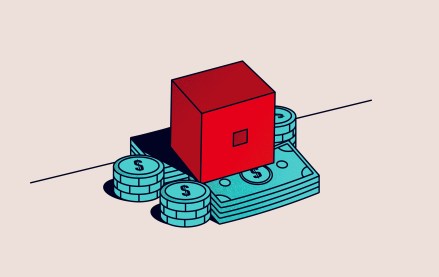Amazon has abruptly cut its Google Shopping ad spending – cue the speculation

It can be difficult for smaller advertisers to gain a foothold in Google’s search advertising auctions. Money talks, and marketers without the limitless cash reserves of their largest rivals often find themselves boxed out of the best slots. But every now and then, a major player dips out – and the status quo gets remixed.
In the last week, an apparent withdrawal from Google Shopping ads by Amazon has revealed opportunities for rival advertisers while prompting speculation from Linkedin Kremlinologists.
So, how do we know that Amazon’s retreated from the arena? Well, marketers and media buyers investing in Google ads have access to a tool called “Auction Insights.” Among other things, it provides them with a view of the top 10 advertisers for share of impressions in the search environments they’re bidding.
Because Amazon’s retail business covers such a wide swath of product categories, it’s a regular sight on the leaderboard. “For years, they’ve been one of the most aggressive and consistent advertisers in shopping,” said Heidi Sturrock, consultant at OMG Commerce. “Their presence helped set the pace for impression share and CPCs in many categories.”
As recently as July 17, it enjoyed a 60% share of impressions in the U.S. and 55% in the U.K., according to researcher Mike Ryan, head of e-commerce insights at Smarter Ecommerce. But since last week (July 23), the e-commerce giant has disappeared from view – a sure sign that it’s all but withdrawn from bidding on Google Shopping inventory.
“All the evidence points to the fact that they’re not spending at all in Google Shopping,” said John Burton, head of performance at MRS Digital, a performance agency that works with clients like insurer LV. The drop was also confirmed by media agency Tinuiti. “As of July 23rd (the most recent data available from Google), it appears that Amazon has entirely dropped out of Google Shopping auctions for the first time since the early days of the pandemic in 2020,” said Mark Ballard, director of research, in an email.
It’s a significant move by the retailer.
Amazon’s exact reasons for cutting the media channel out of the blue are as yet unknown; a spokesperson for Amazon declined to comment. But it’s worth remembering that Google Shopping ads are used by advertisers to net consumers close to the point of purchase. They’re a bottom-funnel format useful for translating awareness and consideration into hard cash – and one turned on and off with relative ease, as brands’ strategies shift.
When Temu and Shein ducked out of the search market earlier this year, it was an indicator they were cutting spend in response to rising costs. Amazon isn’t in the same predicament, but it’s not the first time this year that the retailer has reduced its ad spending in this way, per Ballard.
“In mid-Q2 of this year, Amazon had cut back their presence in Google auctions for about three weeks before ramping up again ahead of, and particularly during, Prime Day,” he said.
Amazon’s apparent moves have got performance media experts speculating on its motivations.
The cutback could be a sign the retailer is tired of funding a rival for advertising dollars and e-commerce supremacy, as Ryan wrote on LinkedIn. It could be a cost-cutting exercise kicking in during the trough between major sales events like Prime Day and Black Friday, noted Burton. Or, taken together with the April reduction, it could be a live-fire incrementality test – Amazon’s execs turning off the channel to see how much it affects conversion rates.
Whatever the cause, it’s welcome news for the other brands vying for the eyes and clicks of search users. Amazon’s sudden absence from the market means they’re more likely to increase their share of impressions, increase conversions and click-through rates (CTR) and do so at a lower cost-per-click (CPC). “This could provide a significant opportunity for other brands to capture traffic in Q3 if the e-commerce giant continues to sit on the sidelines,” added Andy Taylor, vp, research, Tinuiti.
Sturrock said that advertisers like Walmart, Target and Home Depot had already increased their share of impressions since July 23 by as much as 20%.
“[Amazon] inflates the costs for everyone else. Everyone else is having to pay more to compete with them. So we’re fully expecting to see CPCs drop for our clients,” said Burton.
It’s not immediately apparent how far rates could fall, however – or how fast. Scott Carruthers, senior director of paid search at Journey Further, said one of the agency’s FMCG clients saw a CPC decrease of 40% – an indication of Amazon’s former activity in that category – but that on average, CPCs had fallen 1-3%. He told Digiday that Google’s agency reps had suggested Journey Further’s clients increase their spending owing to Amazon’s retreat (without mentioning the retailer by name) in a routine call, but said none had yet taken up the invitation.
“We’ve had a couple of Google reps try to talk people into take advantage of this … the performance outcome off the back of it is likely to be decent, because there’s one less major competitor in the space,” he said.
Similarly, Sam Piliero, founder and CEO of performance agency The Moonlighters, said his team had recorded a 4% average drop in CPCs since July 27 – but noted that such a drop was so far within ordinary bounds, given the waxing and waning of ad spend and demand; Amazon’s retreat may yet cause a larger decrease.
Still, any drop is welcome news for smaller advertisers, particularly those with automated bidding strategies already set up. “This is a good time to review auction insights data before and after July 23 to identify where gaps have emerged,” said Sturrock.
But it would likely take both a significant fall in CPCs and conversion rates on Google Shopping ads holding steady for advertisers to consider shifting additional budget into the channel, Piliero suggested.
“Where we want to jump on it immediately is when we see a dip in CPC and flat in conversion rate,” he said. “Which means automatically that formula would make return on ad spend or cost per acquisition get closer to target.”
Until that happens, buyers like Piliero and Burton will be watching their dashboards closely.
Google did not respond to request for comment by time of publication.
More in Media Buying

Media buyers shift spend from The Trade Desk’s OpenPath over transparency concerns
OpenPath offers buyers a “cleaner” route to publishers, but some are concerned about lack of clarity over indirect costs.

Why brands are still showing up on Roblox
Over the past year, Roblox has become harder for brands to ignore — not because it has resolved the challenges of digital commerce, but because of the scale at which younger consumers already use it.

Why Pinterest wants to buy tvScientific, and what it signals for the CTV ads business
Corporate development sources estimate the deal valuation to be above $300 million, claiming tvScientific’s gross revenue is approximately $100 million.







